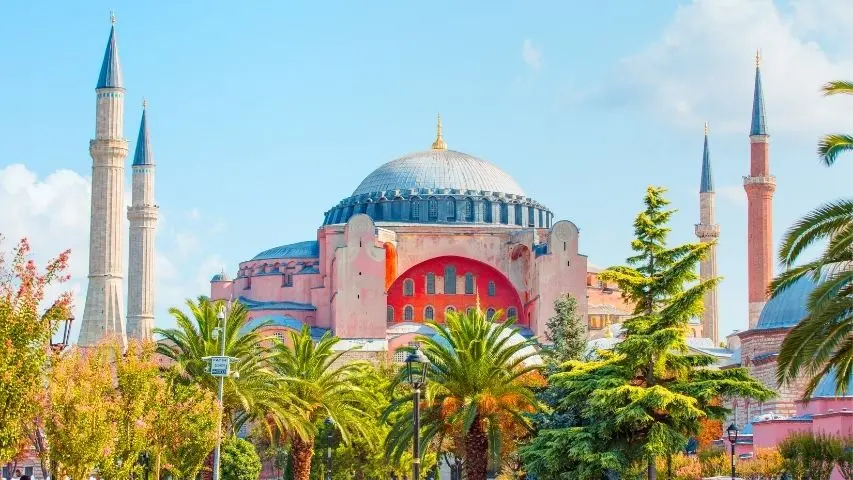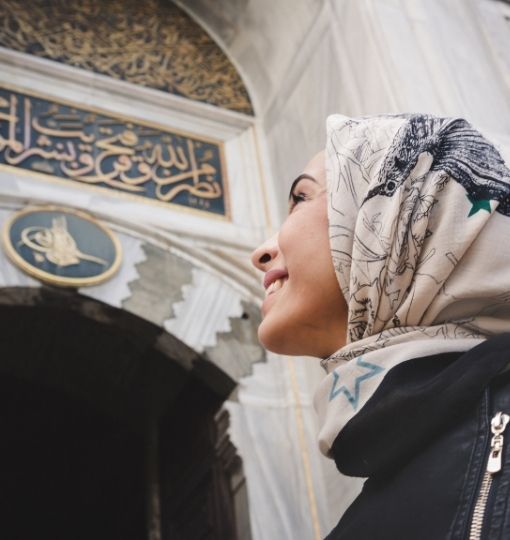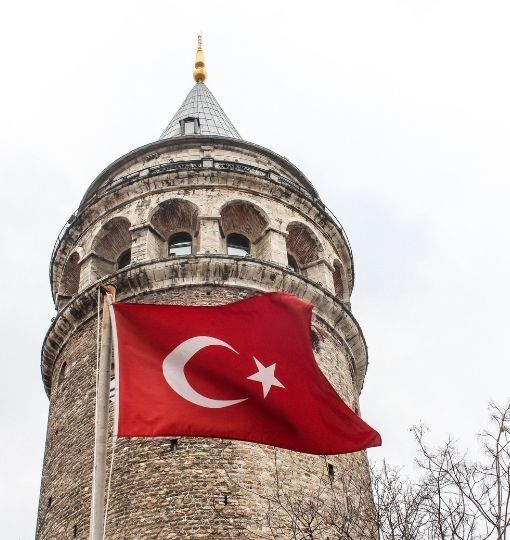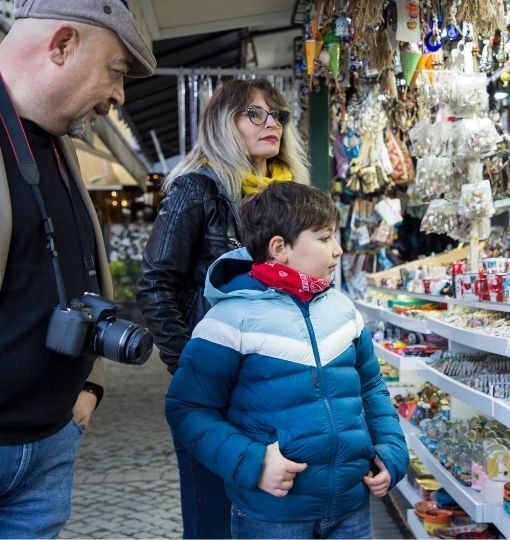Karakoy hugs the mouth of the Golden Horn where it meets the Bosphorus, and the neighborhood feels alive from dawn until long after the last ferry. Fresh-painted warehouses line a brand-new promenade, fishermen still guard their spots on Galata Bridge, and cruise passengers step straight into city streets instead of a fenced-off terminal.
Come in 2025, and you will see a district fully renewed. Istanbul Modern now gleams in a glass box designed by Renzo Piano on the waterfront, while the Galataport project has buried an entire cruise terminal below ground so visitors can stroll 1.2 kilometres along the sea without barriers.
A Short Walk Through Karakoy History
Layers of empire, commerce, and migration sit behind today’s latte counters and graffiti walls. When you know the backstory, every cobblestone and cornice suddenly feels alive with older footsteps.
Genoese Colony and Medieval Walls
In 1273 the Byzantine court granted Genoese merchants the right to build a fortified trading post on the north bank of the Golden Horn. They filled the hillside with warehouses for silk, spices, and furs, ringed it with stout stone ramparts, and crowned the ridge with Galata Tower in 1348 so watchmen could spot incoming ships on the Marmara and the Bosphorus.
The settlement soon turned into a small Latin city. Genoese guild halls, Franciscan churches, and merchant houses rose beside Greek shops and Jewish inns; streets echoed with Italian, Greek, Ladino, and Arabic. Many of those foundations survive inside later buildings, and you can still trace the line of the medieval wall on narrow lanes like Camekan and Kule.
Ottoman Docklands and the Age of Finance
Mehmed the Conqueror absorbed Galata into Istanbul in 1453 but left its cosmopolitan privileges intact, encouraging Venetian, Jewish, and Armenian traders to keep business flowing.
By the 1800s steam freighters clogged the quays, customs sheds stacked cotton bales six stories high, and Bankalar Street became the empire’s financial spine. The Imperial Ottoman Bank opened its marble headquarters here in 1892, soon joined by Deutsche Bank, Banque de Paris, and Lloyd’s insurers.
Moving money demanded speed, so engineers dug the Tünel funicular under the steep slope in 1875. It is the world’s second-oldest subway after London and still whisks commuters between Karakoy and Beyoglu in ninety seconds, a reminder of how modern the district once felt.
Industrial Decline and Creative Revival
After the 1950s big cargo operations shifted up the Golden Horn and across to Haydarpasa, leaving Karakoy’s piers quiet and its warehouses empty. The water grew foul, the banks moved north to shiny towers, and the neighborhood slipped into decades of neglect.
Clean-up projects in the 1990s brought life back. Artists rented cheap lofts, cafés replaced ship chandlers, and two headline projects sealed the rebirth: Istanbul Modern reopened in a glass box by Renzo Piano in 2023, and Galataport unveiled the world’s first underground cruise terminal along a 1.2-kilometre public promenade in 2024. The district that once guarded galleons now welcomes gallery-goers, joggers, and sunset strollers.
Landmark Highlights
Karakoy keeps its most famous sights within a ten-minute walk of one another. Spend a day here and you can climb a medieval watchtower, admire world-class art on the water, pray in a sixteenth-century mosque, leaf through bank ledgers in a free museum and finish with sunset on a brand-new promenade. Below you will find deeper notes on each landmark so you know exactly why it matters and how to enjoy it.
Galata Tower
The stone cylinder that rules the skyline was raised by Genoese merchants in 1348 as the watchtower of their walled colony. It stands 62 metres high and its Romanesque crown still gives the best 360-degree view in Istanbul. A careful restoration finished in 2023 stabilized the masonry, added bird-nest niches for the migrating swifts and rebuilt the wooden balcony.
Visitor numbers are now capped at one hundred people per hour, so securing a hosted entry through Istanbul Tourist Pass saves a long wait. Two lifts take you to the seventh floor; a short spiral stair climbs to the open deck where you can trace the curve of the Golden Horn and watch ferries draw silver lines on the Bosphorus. Go near closing time for softer light and fewer selfie sticks.
Istanbul Modern
Turkiye’s first museum of modern art reopened in May 2023 inside a shimmering glass-and-aluminium building designed by Renzo Piano. The five-level structure offers 10,500 square metres of galleries, a photography wing, film auditorium and an education lab for kids. Huge windows pull the Bosphorus into the galleries, and a roof terrace frames Topkapi Palace across the strait.
Inside you will see a permanent survey of Turkish art from 1945 onward alongside global names like Olafur Eliasson; outside a public sculpture garden spreads toward the sea. The ground-floor café and design shop face the Galataport promenade, so even non-ticketed visitors can drop in for coffee with a front-row harbor view. Aim to visit mid-week when cruise traffic is light and the light through the facade is crystal clear.
Kilic Ali Pasa Complex
Ottoman admiral Kilic Ali Pasa asked master architect Mimar Sinan to build this mosque beside the docks between 1578 and 1580. Sinan answered with a single half-orange dome that echoes Hagia Sophia on a smaller scale and floats above a cube of pale stone pierced by stained glass. Iznik tiles glow in the mihrab, and carved marble medallions honor the admiral’s victories at sea.
The wider complex once served sailors with a madrasa, fountain and bathhouse; the hammam was restored in 2011 and now offers evening steam sessions under the original brick domes. Non-Muslim visitors are welcome outside prayer times—bring a scarf to cover shoulders, slip off your shoes at the door and let the caretaker point out Sinan’s signature on the courtyard fountain.
SALT Galata
Bankalar Street was the Wall Street of the Ottoman Empire, and this marble palace from 1892 held the Imperial Ottoman Bank. A French-Levantine architect, Alexandre Vallauri, mixed neoclassical pillars and cast-iron beams long before art-deco lobbies became fashionable.
Since 2011 the building has carried a new life as SALT Galata: part exhibition hall, part research library, part Ottoman Bank Museum. Entry is free. Browse the original vault rooms to see nineteenth-century share certificates, then climb to the reading room for Golden Horn views.
The ground-floor café and Neolokal restaurant both champion Anatolian produce, so it is a fine lunch stop between sights. Opening hours run 11:00-19:00 Tuesday to Saturday and until 18:00 on Sunday.
Camondo Stairs
A flourish of neo-Baroque curves links Bankalar Street with Galata’s upper slope. Banker Abraham Salomon Camondo commissioned the staircase in the 1870s so his grandchildren could reach the Austrian High School safely. The double-helix shape acts like a braid, slowing a fall if someone trips, and the pale stone catches golden light at dawn.
The Camondo family’s banking empire has long gone, but the stairs survive as one of Istanbul’s most photogenic corners—come early for a clear shot, or stay late and watch newly married couples queue for wedding photos.
Galataport Promenade
What used to be a fenced-off dockyard is now a 1.2-kilometre waterfront open to everyone. Galataport sank its entire cruise terminal 29,000 square metres underground and installed a 176-panel hatch system that only rises when a ship is in port. On normal days the quay feels like a seaside park lined with design stores, street-food kiosks, and pop-up art shows, while the original Tophane clock tower and cannon foundry peek through newer glass.
The terminal can handle three ships and 15,000 passengers a day, yet you will rarely notice the logistics rumbling below your feet. Tram T1 stops at the eastern gate, and Istanbul Modern sits at the center, so you can weave culture, shopping and sea air into one relaxed loop.
What to Do and See in Karakoy Istanbul
Karakoy rewards slow wandering. Pick a theme or let the alleys guide you—there is always something new behind the next mural.
Street-art safari: Mumhane Street and the lanes toward Kemeralti burst with graffiti and pop-up galleries. Bring a camera and look up: many pieces fill entire facades.
Golden Horn ferry rides: Public ferries to Kadikoy, Uskudar, and Eyup give postcard views for the price of a transit swipe.
Design shopping: Indie boutiques like Mae Zae and weekend pop-up markets sell ceramics, linen wear, and local prints.
Nightlife and music: Jazz riffs spill from vaulted brick arches under Galata Bridge; roof bars on Bankalar Street serve raki with sunset over Suleymaniye Mosque.
What to Eat and Drink in Istanbul Karakoy in 2025
Food in Karakoy swings between century-old institutions and experimental roasters—perfect for sampling both tradition and trend.
Karakoy Lokantasi: A turquoise-tiled bistro famed for its midday meze trays and evening seafood plates. Book ahead for dinner.
Karakoy Gulluoglu: Istanbul’s first dedicated baklava shop opened here in 1949 and now sells pistachio-stuffed midye baklava by the kilo.
Third-wave coffee: Karabatak set the trend in a converted workshop, while Coffee Sapiens roasts beans on site and chats you through every pour.
Street bites: Grab a fresh simit at the tram stop, or try a midye tava (fried mussel sandwich) from carts that appear after dark. Oh, don't forget to get a simit from one of many old bakeries.
Rooftop drinks: Terrace bars line Voyvoda Street; order a glass of local wine and watch the ferries trace light trails on the Bosphorus.
Practical Tips for Discovering Karakoy in 2025
Even a quick visit runs smoother with a little planning.
When to go: Mornings bring softer light and open tables at cafés; Friday nights get crowded once office workers clock off.
Getting around: Tram T1 stops at Karakoy, and ferries from Eminonu, Kadikoy, and Uskudar dock beside the Galataport terminal.
Money and connectivity: Most spots take cards, but keep small lira coins for tea kiosks.
Etiquette: Cover shoulders and knees inside mosques; ask before photographing shopkeepers.
Explore Karakoy and the Rest of Istanbul with Istanbul Tourist Pass®
If you plan to climb Galata Tower, tour Dolmabahce Palace, or cheer inside the Besiktas JK Museum, the pass covers them all and more. It bundles over 100 attractions and extra services into one QR code on your phone.
Galata Tower hosted entry: Get your tickets from a local guide, skip the ticket line, and use the audio guide to decode every skyline landmark.
Dolmabahce Palace skip-the-line ticket with audio guide: Wander chandeliered halls and Ataturk’s study any day except Monday.
Besiktas JK Football Museum: Walk straight into Tupras Stadium to trace the club’s 120-year story.
Flexible 1- to 5-day passes: Choose the length that matches your stay, tap to activate, and flash the QR at each venue.
The pass often cuts total costs by half compared with single tickets, and the live schedule in the app helps you dodge unexpected closures. Pair the pass with Karakoy’s easy footpaths and ferries, and you will spend more of your trip tasting baklava, sailing the strait, and soaking up those unbeatable rooftop views instead of waiting in queues.













.jpg)



